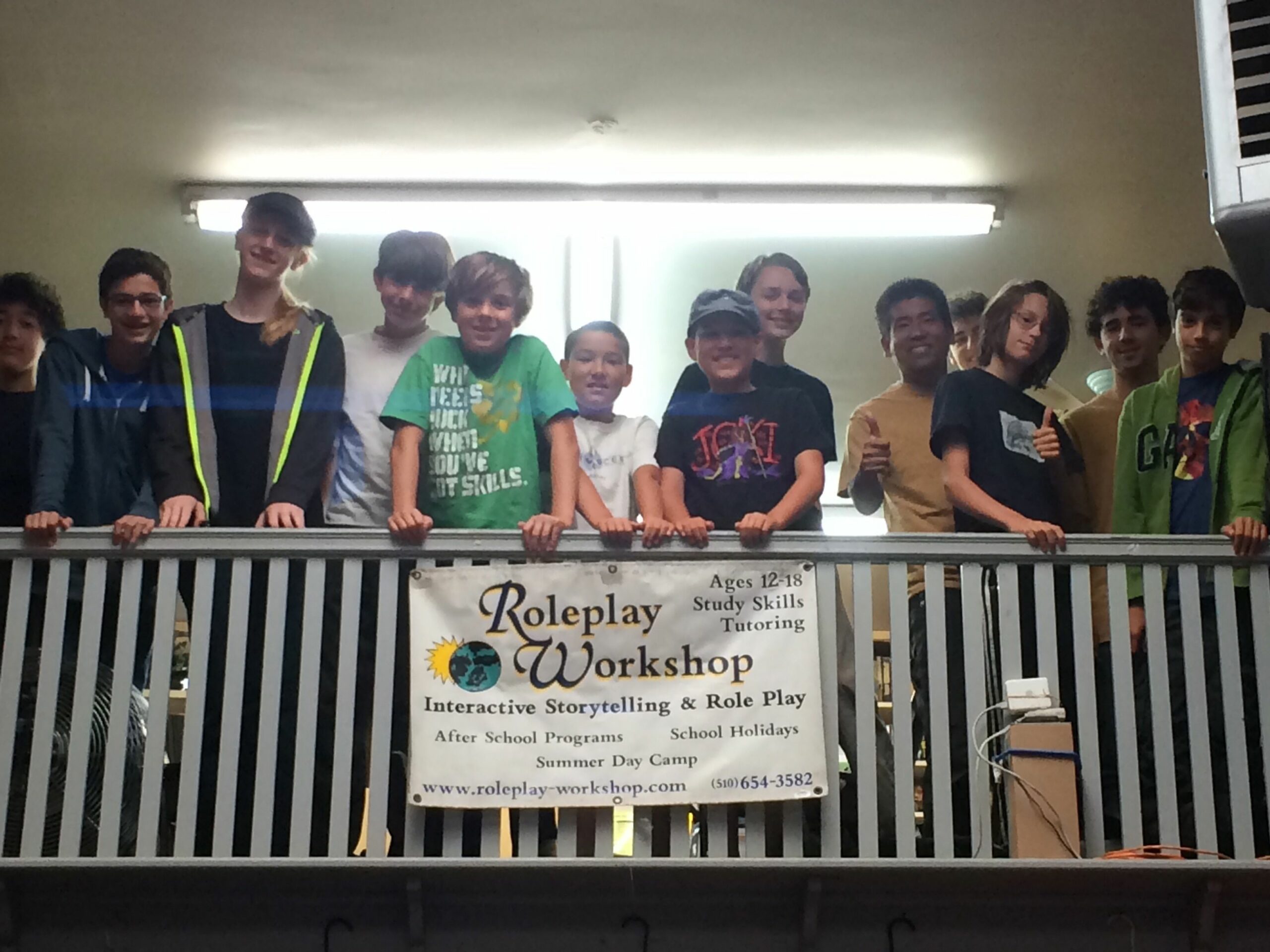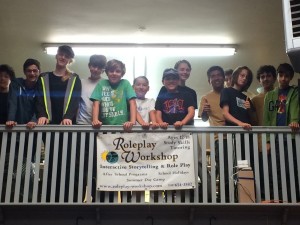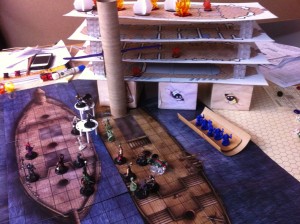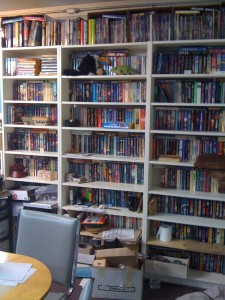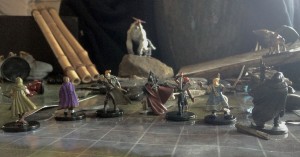There are a lot of great RPGs out there, and a lot of great players. There have been proven benefits for children who start playing at a young age, and Becky Thomas of The Roleplay Workshop has run a youth program for students in California for the last 25 years. Working at both conventions and after-school programs, she’s managed to help children throughout her area as a professional GM. Our senior editor Tara Clapper interviewed her about her projects in a series of e-mails. -KungFuDave
Tara M Clapper: The real world has a lot to say about limitations, especially when it comes to financial status, social status, gender, and race. How do RPGs transcend that and let students connect with others who are different than themselves?
Becky Thomas: I would say that RPGs have an amazing potential to allow people to connect with others who are different than themselves. However, much depends not only on the game system and world, but also on the Game Master. How does the world handle social status, gender, race? How does the GM chose to present those differences? What does the GM reward? Who does she have as villains? Who gets to be the ‘good guys?’
I designed the world of Abantey to have an incredibly diverse range of people and culture. While each race and culture has strengths, they also have weaknesses. Many of the cultures superficially seem to be incompatible. For example the Baluud Culture believes all life is sacred and lives in harmony with nature, while the Sakeet Culture believes in earning personal, family and clan honor through physical combat.
While some GMs would choose to place those cultures at odds in games, I choose to have my players find ways for them to seek common goals and to resolve things in a way that fits both cultures!
There are innumerable methods to teach commonality – connectedness – in RPGs. A good example might be to set up games where the player characters form deep connections with ‘common’ people. The GM can give the characters a mission to help a small village, giving villagers a critical role in the characters’ ability to succeed and then having the villagers reward the characters emotionally – welcoming the characters into their homes and lives.
I could give many many more examples.
TMC: Sometimes when I tell people I LARP (live action role play) and play tabletop RPGs like Dungeons & Dragons, people say ‘aren’t you a bit old for that?’ What do you say to people who believe that RPGs are only appropriate for people in a certain age group?
BT: I point out the it is now common for BIG businesses to use ‘team building’ exercises for their employees that are in reality nothing more than LARPs or RPGs. Is there much difference between doing a ‘fantasy football league’ and an RPG?
TMC: What do you think people learn about themselves when they create and portray a character in a role playing game? As a teacher, do you feel that this is an important part of a child’s development? Is it something necessary for adults to do as well?
BT: I feel that all players of RPGs are exploring aspects of themselves, consciously or unconsciously every time they play an RPG. What types of characters we choose reveals a lot about who we are, what we fear, what we dream of, what we are afraid of. These choices and help us learn about ourselves, help us ‘purge’ ourselves of frustrations, or help us act out damaged bits of ourselves.
How the GM handles these can have good and bad consequences. For example, when a GM always rewards the player who is being misogynistic, it reinforces that behavior. This is particularly evident in video games. If the GM instead chooses to discourage unhealthy behaviors or actions, it can help the person change.
This is very evident with youth. I constantly see kids who are bullied at school choose to play the biggest most badass character they can. I see kids who are insecure in their intelligence, or overly confident in their smarts, choose to play characters who are smart.
I’ve used character choices with the youth in my program to help them discover new things about themselves. Like asking the kid who thinks he’s dumb to play a smart character and then helping him find success in the game. Or getting the quiet and shy player to play a big, strong, powerful character who helps others.
TMC: Are there consequences for decisions in Abantey? Do you think it’s important for there to be a game environment in which risks can be role played? Why?
BT: It think it is vital that there be realistic consequences in games. In Abantey, players are NOT rewarded for what they kill. We reward teamwork, problem solving, good role play, good ideas and looking for ethical solutions. That is not to say that characters never get in fights or that they never end up killing someone or something. There are situations where there are no other options. We encourage and reward them for finding another way – and for making sure that they understand the difference between action and violence.
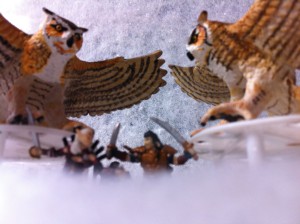
The consequences need to be realistic. For example, if a player shoots a crossbow wildly into a crowd and kills an innocent civilian, their character is held responsible for the family of the person they killed. In the rare case of the player not understanding the seriousness of randomly killing people, we have had their characters get confronted by the children of the dead person, wanting to know if daddy/mommy were coming back.
Of course, we are EXTREMELY careful to be sensitive to how the players are responding. There is a fine line between a lesson well taught and teaching the wrong lesson. In some cases we have worked with the student, their parents and their clinicians to help the person work through personal issues.
TMC: How does Abantey help students improve core skills?
BT: Abantey is a ‘system heavy’ game. There is a lot of number crunching. I designed it to keep things as realistic as possible, researching things as diverse as relative damage caused by various weapons to healing rates to the physics of falling to fatigue and encumbrance. With my background in the sciences, particularly biology and ecology, I run an extremely realistic world, down the the ecosystems and economics of trade.
As a credentialed teacher, I find that learning things within an enjoyable context is not only a lot more fun, but also lasts longer. A great example is the classic math problem: if a train is leaving Chicago and one is leaving San Francisco, how long does it take them to meet?
The problem becomes much more fun and engaging if instead your characters are trying to reach a location before another group! The players calculate how fast they need to travel, how frequently they need to change horses, if they can bring all their gear.
TMC: Why do you think students (and parents) respond to this sort of nontraditional learning? Why isn’t it just common practice to teach through RPGs as it is in some other countries?
BT: That’s a tough one. Often times parents don’t see the value of what we do. What they do see is that their child is eager and engaged in an activity. That they are willing to get up early and get themselves ready for Abantey. That they are reading and actively working on building characters. They are amazed that their kids love the program, and yet talk about how we are firm and strict about some things (no bullying, respect others). Eventually, they see that we’ve helped their child become an independent, responsible person.
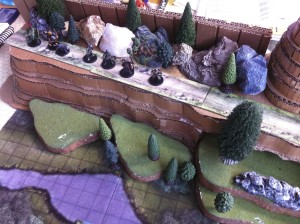
Why we don’t use RPGs more here, unlike in many other countries… that’s a tough one. I have many, many opinions. I think much of it has to do with the US liking ‘easy’ and quick things. The shift to the ‘programmable’ citizen who buys what they are told to, who follows the rules, who doesn’t ask questions. But that’s pretty controversial.
TMC: Even when playing RPGs with good friends, I find that the beginning of the adventure (when characters typically meet or gather together to embark on a quest) is the toughest part of an RPG. It’s even more intimidating when the characters and players are all new to each other. How do you handle this with your groups?
BT: 🙂 That’s always a challenge! Frankly, we often fall back on the classic ‘so, you’re hanging out at a bar/park/restaurant when suddenly…’. A great way is to ‘start it with a bang,’ to quickly put all the characters into a situation where they must form a commonality to survive. When I have time, I like to have the players make characters from the same town, or same family. It helps that in our world there are stories of past games that are shared about, and we often connect our current games to past missions. This gives the kids a ‘connection’ to the game.
TMC: Why do you think there’s such a stigma about people who play RPGs, particularly among kids? What can we do to change that?
BT: I don’t think there is as much stigma as there used to be, mostly as a result of the growing mainstreaming of video games.
However, I think a good way to decrease the stigma is modeling – the more we can break stereotypes of what a gamer is, their gender, their physicality, their job choices – the more we can reduce the stigma. Look at the football team that plays Settlers of Cataan. Look at Vin Diesel (plays D&D), Robin Williams (played Warhammer) and I’m sure there are many more.
TMC: I know a lot of people who love RPGs of various types and would love to make a living running games in some capacity. What is your advice to them?
BT: Oh boy.
It’s not enough to love games, to be good at running them, you must also be good at being a ‘professional.’ Whether you’re going to work with kids or with adults, you will need to not only have the skills to act and think professionally, you’ll need good business savvy to keep things going and to expand your business. But most importantly, your games can’t suck! Be a good storyteller. Learn people skills. Develop a subtle hand for running a story and for ‘working’ your group. Be fair. Be kind. Be honest and critical with yourself. Look for and take constructive criticism. Be willing to change.
Learn more about Becky and her workshop on her website or on Facebook. If you live in or near her CA location, you can sign up on her website.

